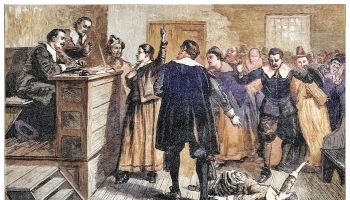Alison Grant, The Plain Dealer
With Robert Schoenberger and Michelle Jarboe
TWINSBURG, Ohio — An oily haze hung from the ceiling as John Goode slid his card into the time clock at Chrysler’s Twinsburg Stamping Plant.
Mammoth presses in the cavernous building pounded heavy-gauge steel into car frames. The ear-splitting thunder mixed with high-pitched screams from machines punching out exterior trim. Men on the production line stood under crude cardboard awnings to shield them from oil sprayed on steel as it was turned into car parts.
The Chrysler factory was like nothing Goode had ever seen. Raised on a tenant farm in South Carolina, he arrived by bus in Cleveland at age 15 when his family joined the migration of black people looking for jobs and a better life in the North. In 1964, at 22, he grabbed one of the prizes — work as a press operator at Chrysler’s seven-year-old plant in the village of Twinsburg.
A job at the plant brought mind-numbing drudgery and high injury rates. But it also held the promise of regular wage increases, solid health benefits and the chance to build a secure retirement.
The promise came from an auto industry that for most of the 20th century was the undisputed trendsetter in American manufacturing, helping pull union and nonunion workers alike into the middle class.
Today, economic malaise and foreign competitors taking over a bigger chunk of the U.S. market have forced two American automakers into bankruptcy.
Twinsburg Stamping and its workers are among the casualties. The plant’s last day is July 31. Already, a liquidation company is stripping out the giant presses.
Some workers like Goode got out before the carmaker’s 2009 bankruptcy. Other workers and their families are splintering in the aftermath.
It’s hardly what anyone envisioned in January 1956, when the future gleamed like the grill of a Chrysler New Yorker.
Plant arrived in 1950s with holiday-type fanfare
At a groundbreaking ceremony that month, Twinsburg residents, politicians and auto executives assembled along a frozen farm field decked with bunting midway between Cleveland and Akron. Warmed by enthusiasm and coffee, they anticipated a surge of prosperity.
Construction was about to begin on what was hailed as the world’s biggest auto stamping plant. The 1.5 million-square-foot factory would pound out the doors, roofs, hoods and side panels for Chrysler car lines.
Almost 1,000 of Twinsburg’s 3,600 inhabitants showed up despite a steady snowfall to greet the coming of their No. 1 taxpayer. Gov. Frank Lausche, Akron Beacon Journal President and Editor John S. Knight, Northeast Ohio mayors and Chrysler officials presided over the celebration.
The general manager of Chrysler’s auto division pushed a stainless steel shovel coated in rubber — to symbolize linking the world center of rubber in Akron and its giant industrial brother, the auto industry — through 3 inches of new snow to take a bite of soil. Two men from the Hudson Fireworks Co. used cigars to light a 19-gun salute. A couple of American flags released by aerial bombs fluttered in the air.
The village declared a half holiday for “Chrysler Day.” Townspeople parked Chrysler cars on all four sides of Twinsburg’s square. Businesses closed. School was dismissed early.
A banquet for 400 business and industry executives at the Sheraton-Mayflower Hotel in Akron was the cherry on top. Chrysler officials said they were a bit overwhelmed by the enthusiasm. Company executive John Brennan pronounced Twinsburg a good place for people to make a living.
The village economy took off like it was peeling rubber. Even before the plant came on line in August 1957, a small newspaper advertisement enticed buyers to gobble up 250 ranch homes in the space of four hours.
Twinsburg built a new sewage disposal plant, and an East Ohio Gas Co. transmission line installed to feed Chrysler’s operations gave residents natural gas service for the first time.
Three orchards and four houses came down to let bulldozers dig the plant foundation. Bedrock was 14 feet below ground, close enough to brace presses that would reach 600 tons in weight with a stamping force of 1,800 tons.
More than 5,000 people requested information about plant jobs during the nearly two-year construction. When the stamping presses roared into action, they produced car parts that at the outset filled more than 100 railroad boxcars a day.
The timing was perfect.
The 1960s were an automakers’ sweet spot, before the first OPEC oil embargo drove up gas prices and widespread auto quality problems. Chrysler introduced the sporty Plymouth Valiant, the boxy Dodge Dart and the legendary muscle car, the Dodge Charger. The Big Three automakers’ sales and profits dazzled Wall Street.
By the decade’s close, Twinsburg Stamping peaked at 5,200 production and management workers. Some 400 suppliers in Summit and Cuyahoga counties sold to Chrysler. The blast furnaces at Jones & Laughlin and Republic in Cleveland were a major source of steel for the relentless presses.
Twinsburg evolved from village to city as plant jobs hit their zenith. Builders broke ground on a Twinsburg industrial park and shopping mall. New homes sold for $19,000 to $32,000, double and triple the prices fetched before Chrysler came to town.
In Cleveland, Goode was making 90 cents an hour polishing silverware and setting up parties for Sherwin’s Catering at East 105th and Carnegie. Then came word: The stamping plant was hiring. On Aug. 17, 1964, “by the grace of God,” he got in.
Grueling work conditions took toll on employees
The 6-foot-4 Goode went to work in the south end of the plant, where presses punched out roofs, hoods and window apertures. One of the toughest jobs was on the “20 line” — the 20th of 29 press lines — that stamped rails for the foundation struts of cars.
A conveyor belt fed 45-pound rails to pairs of men who pitched them onto a press, where the metal had to land on 6-inch pins. A push of a button cycled the machine, trimming excess steel. Workers used skid bars to get the four-foot rails off the die and drop them back onto the belt.
A rail every 10 seconds, 360 an hour, 2,800 a shift. The parts dripped with oil that blackened long-sleeved shirts. Workers wore aprons or paid $2 a week for company uniforms.
One day, a half-dozen new hires on the 20 line, overwhelmed by the task, never returned from lunch. The supervisor who went to see what was wrong found only their heavy cotton gloves.
The line could be brutal, dull and sometimes dehumanizing. The reward was the Chrysler dollar.
Some workers got into drugs, alcohol and gambling to break up the monotony. Twinsburg Stamping became a bazaar of petty vice.
Workers played blackjack and dice in a section called Little Las Vegas. They brought booze to the job in their lunch pails. The sage whiff of marijuana filtered out of the bathrooms and lingered behind the plant where they dumped scrap metal.
A 1987 undercover sting in the plant rounded up 14 people on charges of trafficking in LSD, marijuana and cocaine.
“It’s hard to ask a person to leave their mind at the door and just bring your body in and plug him into the machine and be just like a machine,” Goode said.
Joe Palmer, 50, a giant mountain of muscle, approached working on the assembly line like marathon runners prepare for the next race. His regimen of vitamins and diet was strict.
“You’ve got to train your body,” said Palmer, who worked the door line. “Sometimes you had to make a decision about, do you want to go to the bathroom, or do you want to sit down and rest for 12 minutes? You have to negotiate with yourself a little bit.”
The battle-gray factory was a warren of sharp edges and heavy weights.
Greasy residue slicked the floors. Chemicals sickened workers. Air blew through industrial fans caked with dirt and oil.
“It’s just foolish to think you’re not breathing that in,” said Matt Wetherholt, 41, a tool-and-die maker and nonsmoker who had part of his right lung removed last year because of cancer.
A 59-year-old employee collapsed from a fatal heart attack, triggering a walk-off by union members who said a company physician mishandled the situation. A worker died when he was struck by falling steel. A tool-and-die maker was crushed when a huge draw press fell on him. Workers assigned to clear up the mess became ill from the gore.
The most violent incident was May 15, 1969. Workers arriving the next morning saw blood splashed on the steps near the guard shack.
Robert Smith, 32, of Mogadore, a plant inspector said to be a heavy gambler with family problems, had been fired from his second-shift job the day before. He returned at the 11 p.m. shift change with pistols.
Once inside, he held the pistols waist-high in plain view, according to a newspaper account. It didn’t raise alarms at first because workers had been known to carry handguns in the plant.
Chewing gum, Smith calmly stalked his victims, shooting and killing two men sitting at cafeteria tables and wounding 10 others. The shift superintendent who fired Smith huddled under a desk and apparently saved his life by raising his hands to take the shots that Smith fired blindly into the cubbyhole before turning the gun on himself.
Racism, sexism both inside, outside the plant
Social tensions coursing through the country ran straight into Twinsburg Stamping.
The factory was 95 percent male when Faith Keiper arrived in 1978. Men stripped naked to change clothes on the line at the end of their shifts. They taped pinups from Playboy and Penthouse to the presses.
Co-workers needled Keiper for what they saw as her taking a Chrysler paycheck from some guy who could be providing for his family.
“You aren’t here to do a job,” men said. “You’re here to be looked at.”
In Twinsburg, community leaders struggled for solutions to the poverty in largely black Twinsburg Heights, an unincorporated area near the factory. Thirty miles north in Cleveland, on July 18, 1966, the deadly Hough riots erupted at dusk.
A wooden cross burned the next year at the United Auto Workers hall across Chamberlin Road from Twinsburg Stamping. Inside the plant cafeteria, someone left a KKK sign and a rope.
Black supervisors like Phillip Germany, 61, of University Heights, said they were pinballed between upper management and defiant members of the UAW. In 2001, Germany was among a dozen black managers laid off. He sued, claiming discrimination, but lost.
He still sees a psychologist for what he called a bitter end to 22 years at Twinsburg Stamping.
“It kind of broke me,” he said.
Goode, who had worked his way up to supervisor, would head straight to his vegetable garden after a bad day. His wife, Jackie, would poke her head out the back door of their Cleveland Heights home and say, “You want a glass of water or something?” Among the tomatoes, okra, turnips and beets, Goode wrestled the shop-floor racism into perspective.
“I can’t think of any other job where I could have accomplished the goals that I had,” he said, “without that plant.”
High times for plant, city during Iacocca era
Amid the vice, the social tensions and the health hazards, most people did what they were supposed to do — show up on time every day and work their butts off, said Ron Rini, an electrician.
Before they knew it, new stamping-plant hires were living and breathing Chrysler. Long hours and close working conditions made the 34-acre building into its own world. Co-workers became like family.
“The person next to you is your companion for 12, 16 hours a day. You see more of them than anyone else,” said Keiper, 50, of Mantua, a quality inspector. In 1978, on the day she first clocked in, the old-timers took one look at the skinny 18-year-old and named her “Baby Girl.”
Photos tacked to tool boxes were a slow-motion parade of workers’ families. The children were on there. The wives. The cars. The fishing trip to Florida.
“If the kids graduate college,” said 18-year employee Ron Pardee, “there’s a picture of that.”
–Skilled trades workers like Pardee, 43, of Akron, were proud of their craft. A couple of times Pardee scribbled his initials and the date on an air duct he repaired, even though no one but him could see it, 90 feet above the factory floor.
Lee Iacocca’s arrival as chief executive in 1978 ushered in a nearly two-decade run of critical acclaim for Chrysler vehicles. The company launched the wildly successful Dodge Caravan and Plymouth Voyager, the first modern minivans, and paid off government bailout loans seven years early.
Story Compliments Of The Plain Dealer
















